Visit Library for MBP Pro eBooks |
This year’s Japan Winter Wildlife Tours provided us with a bumper crop of Red-Crowned Crane photos, so despite my sharing six of them already in the previous episode, today we’re going to look at ten more, with a bit of information about each image.
The first thing I noticed as I worked on my selection is that I have become quite partial to the square crop, probably due to the new-found love of medium format with my excursion into film from last autumn. That aesthetic has really grabbed me, and I love the freedom of not having to think about whether it’s portrait or landscape orientation. It just is!
So, three of these images are square format, and two are cropped to 4:5 aspect ratio because I thought that suited the images too. The remaining images are all original ratio, with four of them being landscape on one portrait. For my portrait-oriented images, I generally just slip the camera into portrait mode by rotating it in the tripod ring, or literally by turning the camera when shooting hand-held. Since I started working with the EOS R just over a year ago now, I made a decision not to buy the battery grip, so I have to crank my hand over to reach the shutter button, but with these cameras being so much smaller than their DSLR cousins, that has really not been a problem.
Crane Threesome
Anyway, here is the first shot, which is from the Akan Crane Center. The first nine images are all from February 21, from two different locations, and the final image is from the following morning. As I mentioned briefly last week, the cranes were relatively cooperative this year and performed for us in openings more than they have been in recent years.
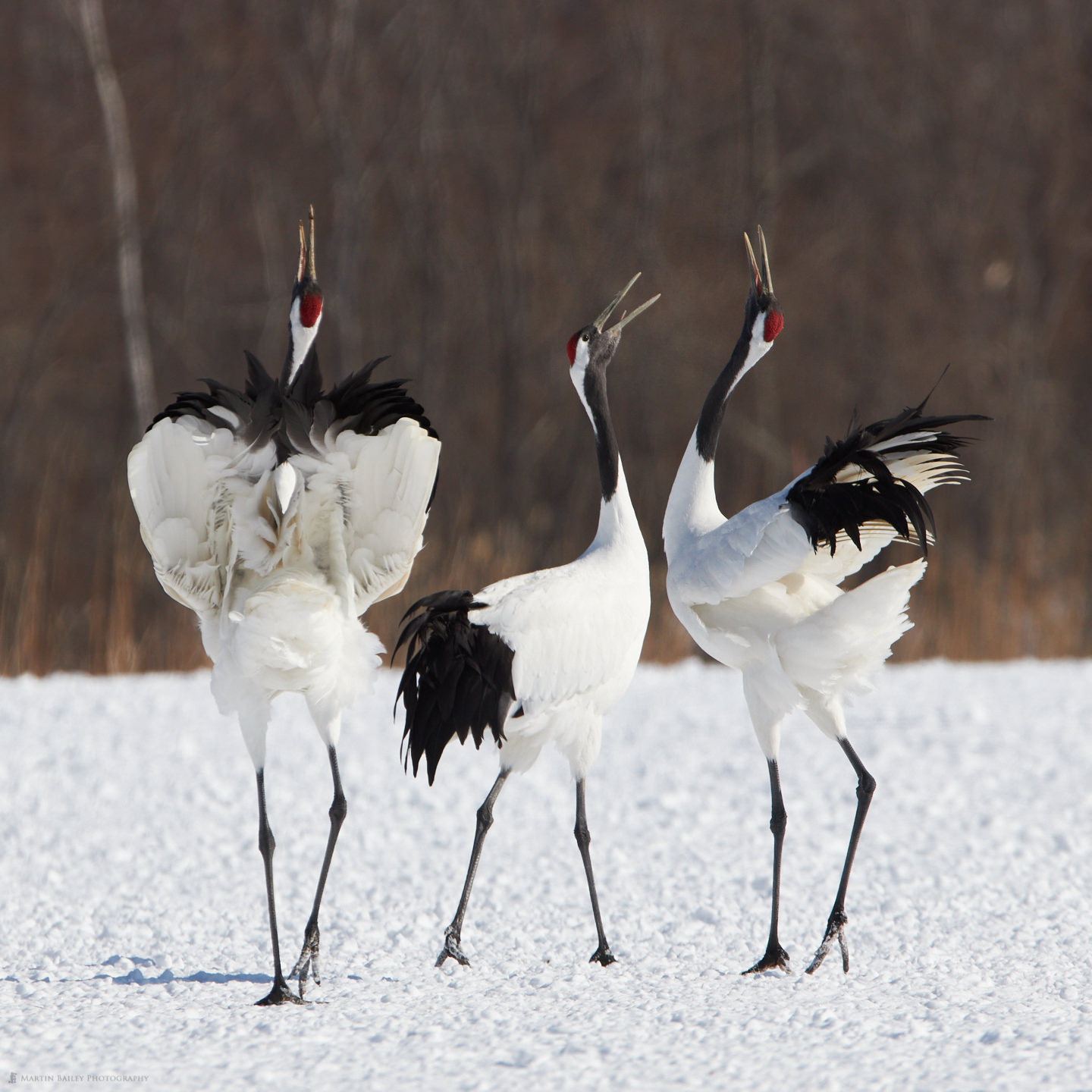
For a while, the increasing number of cranes had made it difficult to get shots like this, without other cranes completely blocking the view, and that of course, is a very good thing. The increasing numbers, I mean. But photographically, it was getting pretty difficult to make uncluttered shots. The warmer weather though has meant more farmland poking through the snow, and that causes the cranes to disperse a little, with more feeding in the surrounding areas, and less of them concentrated in the crane centers.
Another part of this is that they stopped feeding the cranes live fish at this location a few years ago, mostly so as not to attract the sea eagles, which could have brought avian flu, and that would not be good for the cranes. As usual, when something changes, many of the other photographers that bring groups to Hokkaido were complaining, but also, as usual, I instantly saw the positive side to this. The Akan Crane center is now less crowded, on the whole, and the fewer cranes, conversely, brings more photography opportunities.
Let’s Make This Time Well-Spent
As the Corona Virus sweeps around the world, there are of course people losing loved ones, and I in no way want to make small of that, but if you and your loved ones can stay safe at this time, let’s also try to find a bright side. How often do you really get time to spend at home, with your families, with nothing special to do? Usually, we gather at Christmas and other special times of the year, but then the focus in on the event, and everyone rallies around to make that special. Right now, millions of people are being asked to simply stay at home, with no special meals, nothing more than each other, or just yourself, if you live alone.
This to me is a wonderful opportunity to catch up on those things that we always wanted to do, but couldn’t really find the time for. Even just reading those books that you bought but simply put aside, or going through the hordes of photos from trips that we went on, but didn’t get time to look through, because life got in the way. Well, guess what? It isn’t getting in the way anymore, so let’s use this time to do all of those things that we can do when staying at home is the order of the day. These are hard times for many, and really, if you lose a loved one, or lose yourself for that matter, my heart goes out to you, but if you stay safe, and make it through this, we’ll hopefully be looking back on this outbreak in a few years time and actually have some good memories of how we spent our time in self-isolation. Let’s make it count.
Crane Landing
Back to the cranes though. I love the ruffled feathers on this crane as the wind he created catches up with him as he touches down on the snow. With them being so graceful we often forget how much energy it takes to get these birds into the air and keep them there, so it’s a great reminder when we see this disruption in the feathers as they land.
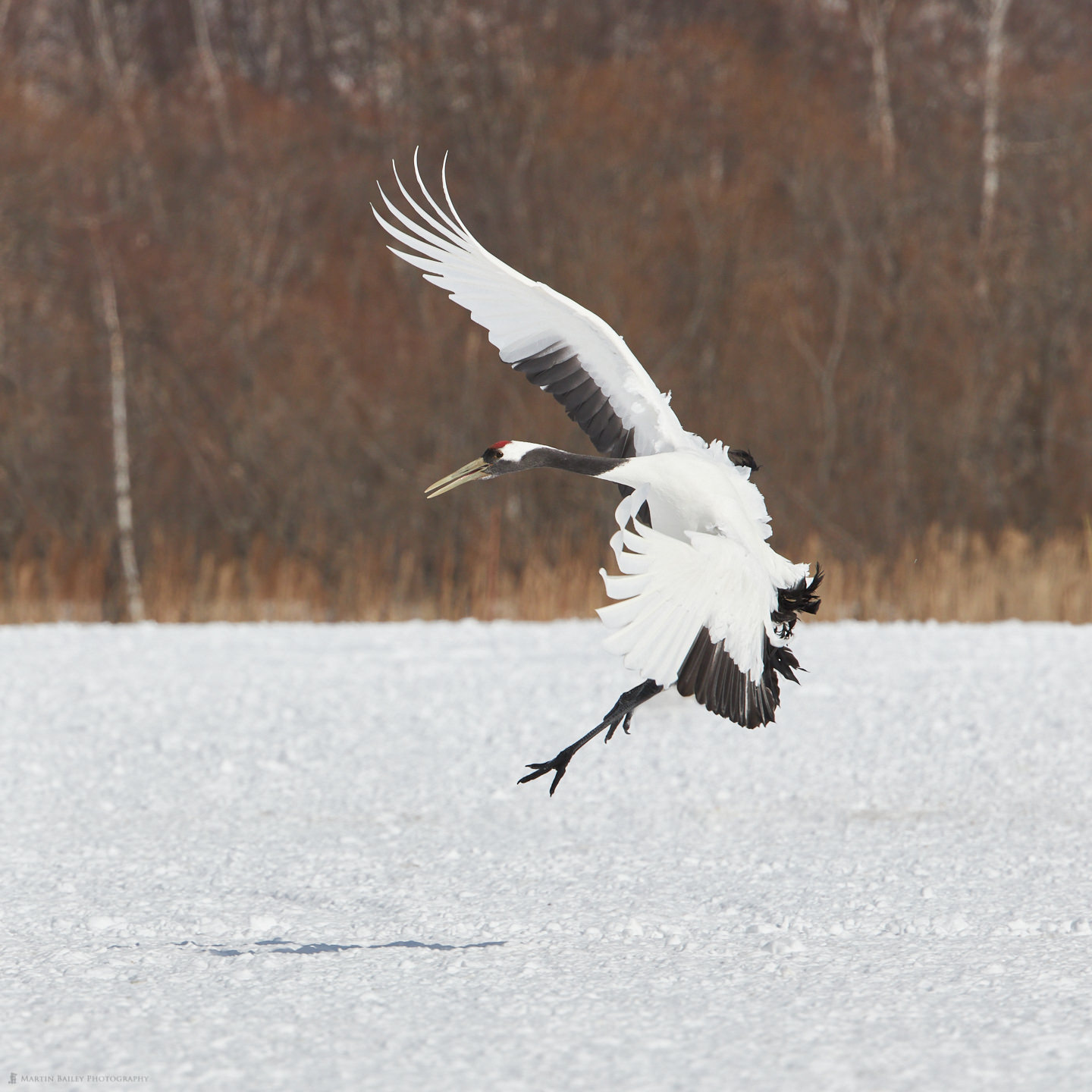
As you can see, the light was pretty harsh on this day, with lots of texture in the well-trodden snow, but the detail in the feathers kind of makes up for that. It’s also nice to have a bit of a catch light in the crane’s eye, as we don’t always get that from this angle. We can move around to the right a little more, which I sometimes do if it looks like something is going to happen, but I prefer this location as I believe it generally gives a higher number of opportunities. I’d have been shooting this crane from behind if I was not where I was.
Ito Crane Sanctuary
Later in the day, we moved over to the Ito Crane Sanctuary, where we continued to get some lovely shots of these awesome avians. Depending on where you stand, and the luck of the draw, we sometimes find ourselves with a pretty low angle, shooting up at the birds slightly, which can be nice. As you can see in this image, it gives us a darker background for the birds, which I like to see some of the time. These two were doing a courtship dance on the hill at the sanctuary, with one of them getting slightly more excited than the other.

This was shot at 490 mm, and the crop is just to bring it to a 4:5 ratio, not actually cropping the height at all, so you can tell that we were relatively close. By comparison, the first image that we looked at was shot at 756 mm, using both the internal and an external 1.4X Extender on my 200-400mm lens.
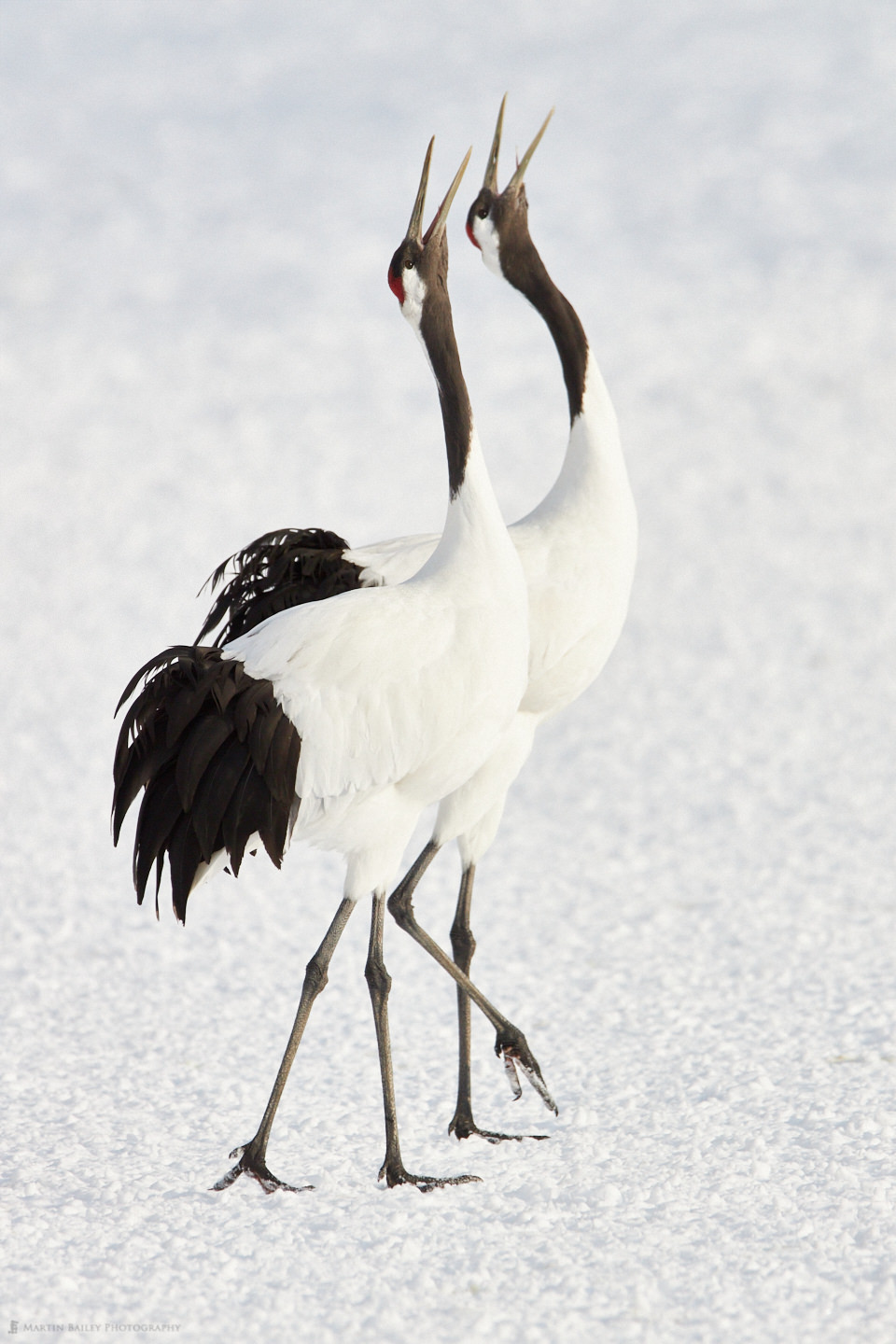
I am coincidentally thinking of selling this lens, now that Canon has announced their upcoming 100-500 mm RF mount lens. As much as I have enjoyed using the 200-400 mm lens, since the updated 100-400mm was released that’s generally all that I am taking with me overseas, so I’m now using the 200-400mm only on these trips, and only really for the cranes.
I imagine that the Extender that is also going to be released for the RF mount will also work well with the 100-500, for a total range of 140 to 700 mm, and that will make it a very versatile combination.
As an aside, I checked the focus distance used for this shot using Raw Digger and found the Focus Distance Upper to be 42.04 m and the Lower was 33.46 m. I checked because the back bird is quite soft, obviously out of the depth of field slightly. This is why I still shoot wildlife at around f/11, but it was still outside of that depth of field.
I went into Raw Digger for these distances, so that I could calculate the actual shooting distance, and see how much actual Depth of Field I have, using my Photographer’s Friend app. I found that I would have been focussed at 37 meters or 120 feet, but Canon’s depth of field is way off. I’d have needed to stop down my aperture to f/115 to get that amount of depth of field at 30 megapixels. Even if I turn off Pixel Peepers mode, and use the archaic 8 x 10 print at arm’s length calculation, I’d have needed f/56. I think I’ll contact a friend at Canon and see if I can get some light shed on how these calculations are being done, and why they are so far off.
I like the shot either way, and was happy to see catchlights again, but my mind wanders like this from time to time, which is probably a good thing, as it helps me to think of cool new features for my app. 🙂
One of the reasons I like the Ito Crane Sanctuary is because it has some very nice trees, in particular the tree that you can see in the background of this next image. Although the tree is not complete, I think it adds a nice additional element to this shot, as a crane flew into the sanctuary. I also like that we have a few flakes of snow in the air. We didn’t get very much snow falling on this trip, but to be able to see the air here is nice.
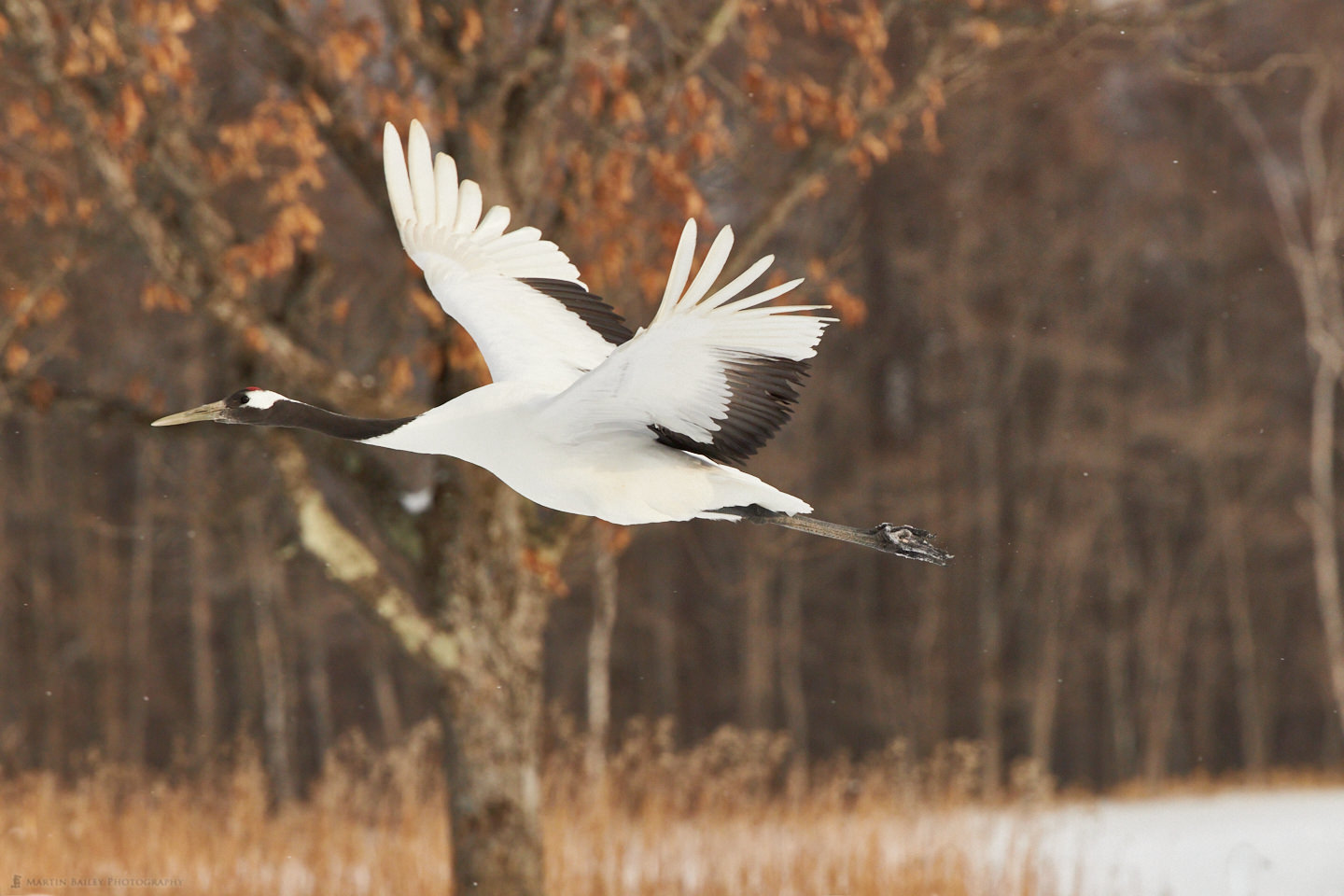
This is uncropped, and I like how the tree on the far right frames that edge of the image as well, so I’ve left the bird on the left third, which also makes us feel as though he’s leaving the frame. He may have been taking off, but from the pose, I think this one was gliding in because a take-off requires much more frantic flapping.
Here’s another image with the base of that tree, and the beautiful grasses around it, helping to give some context for this crane which has just landed and is arching its back, stretching his muscles to relieve the tension caused by flying. I do this sometimes when I stand up after sitting for a while, but I don’t look even a millionth as graceful as these guys.
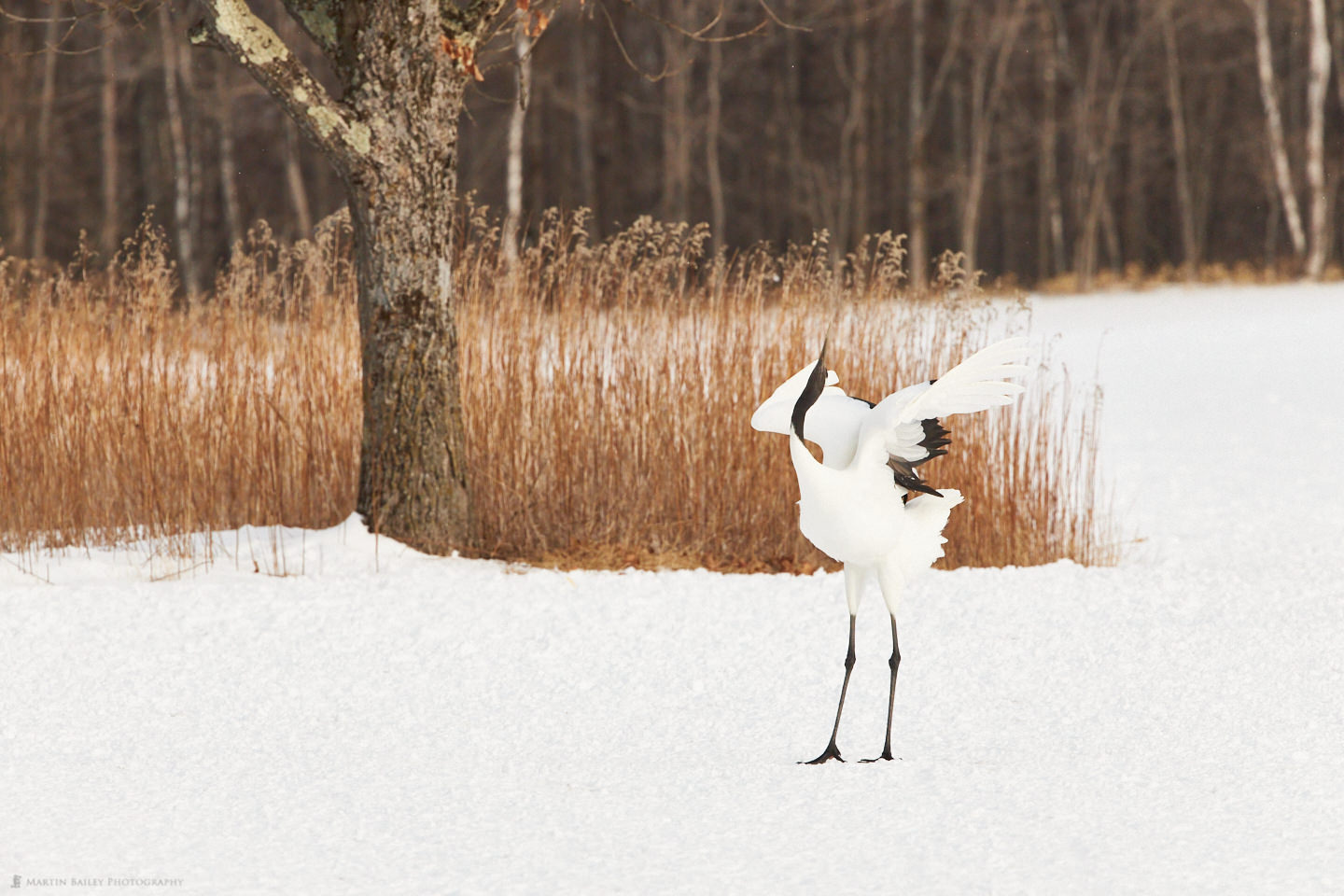
I do like to see the animals in their environment like this as well. Again, it’s the warm winter that’s helping those grasses to show through as much as they are. Often times there is so much snow that they get mostly buried. That’s nice too of course, with just the tree sticking out of the deep snow.
The dancing continued, to the point that even whittling down my selects became quite a task, let alone deciding which shots to share here, but these next few are some of my favorites. Although you can’t see the head of the right crane, I really like the way these two birds are weaving around each other as they dance, and I especially like that you can see the pink on the bottom of the feet on that right crane. That’s not something we see often, so was nice to get a shot of here.
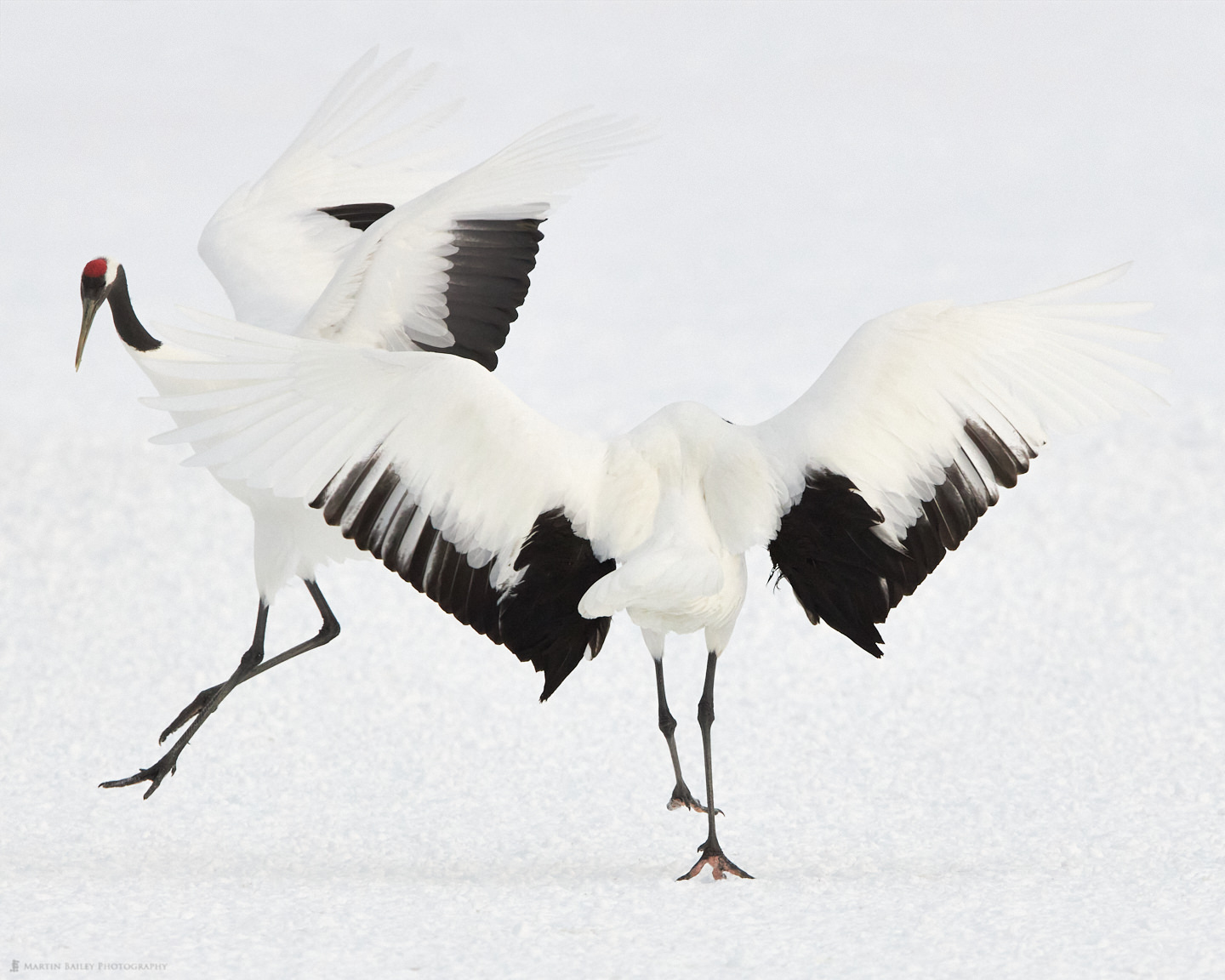
Flamenco Cranes
This next image is literally one of my favorites from the entire trip. These are the same two cranes, just two frames later, and actually still the same second as the previous image, so this is an extension of the previous pose, but now, to me, they look like two flamenco dancers striking the same pose but in reverse, again, weaving around each other in maybe a tango, rather than flamenco, but a passionate dance all the same.
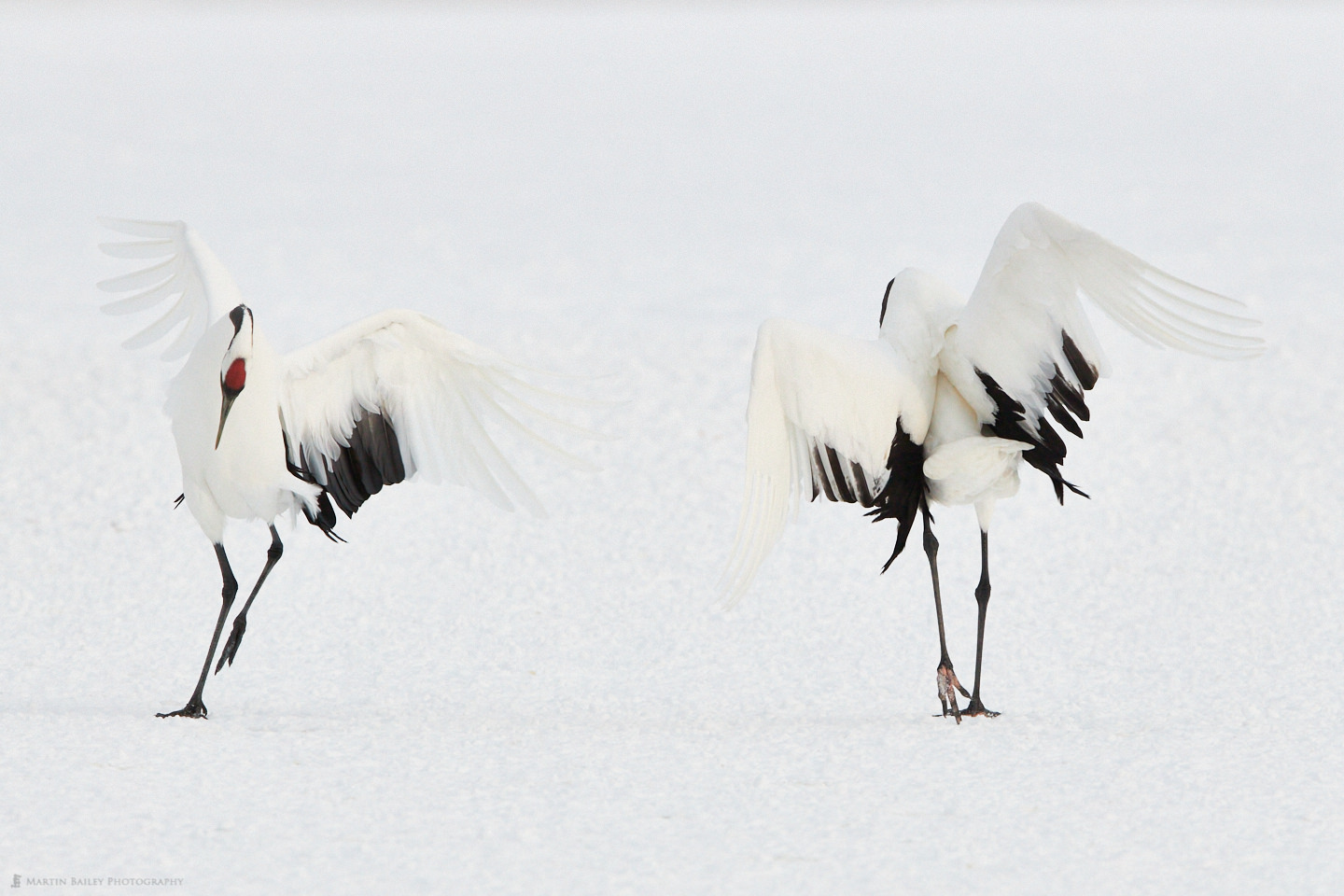
The last shot from February 21 is this image, as a couple started to move in preparation for their dance. It’s obviously not the optimal dance moment, but I just like the poses, almost like a couple at a family wedding, getting up to dance having had too much to drink, knowing that they’ll regret it in the morning but they’re going to do it anyway. OK, so I may be reading too much into that, but I have a vivid imagination.

This final image for today is from the following morning before we moved on to photograph the Whooper Swans. I was hoping to catch the cranes with their breath highlighted by the in the morning light but unfortunately, it was cloudy. The cranes still have to breathe though, and the dark background at the top of this photograph helps us to see that breath in the chilly Hokkaido morning air.
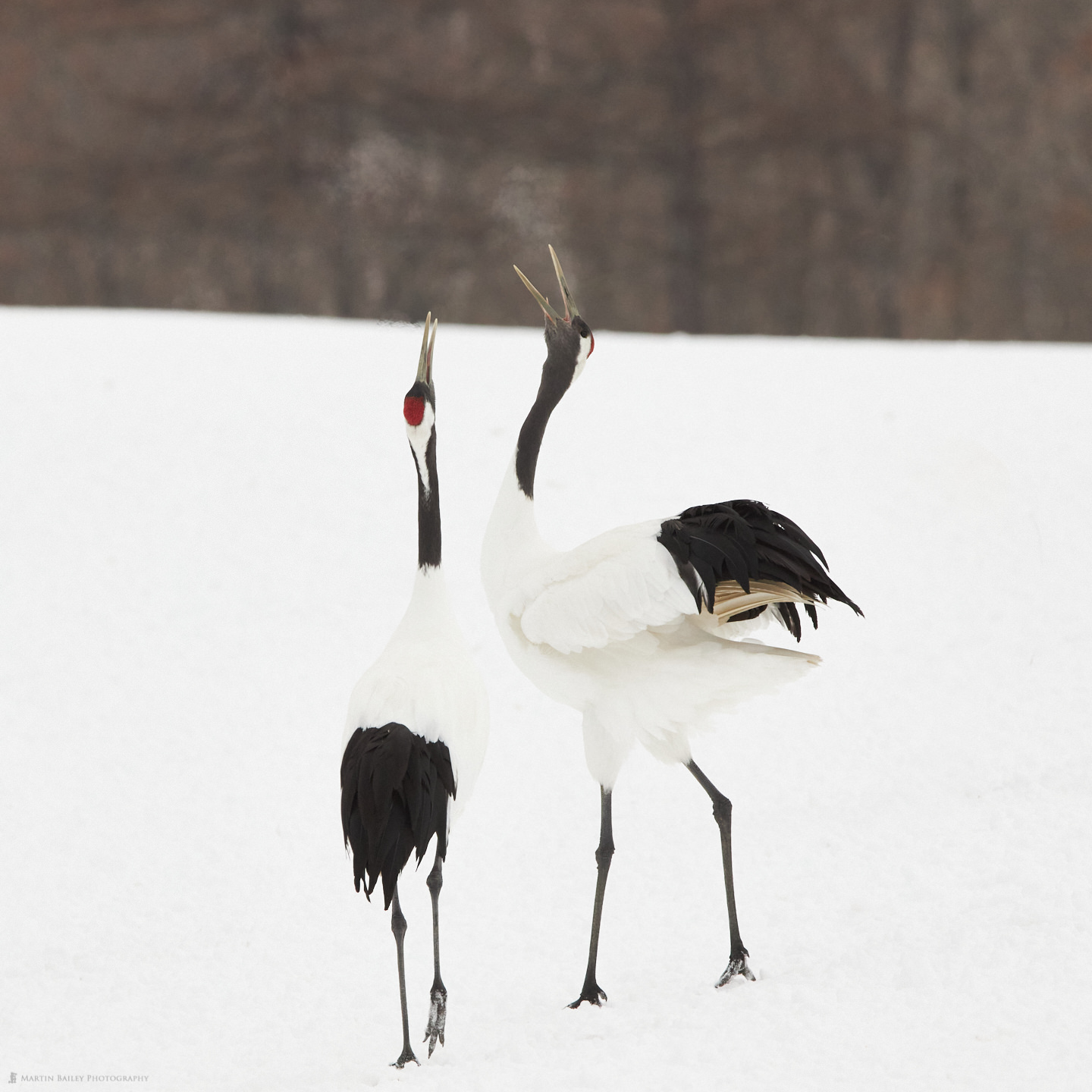
Shortly after this shot we boarded our big bus and headed north for a couple of hours to Lake Kussharo, where we’d start to photograph the Whooper Swans for a few days. Next week we’ll cover that, and then move on to the Sea Eagles to complete the tour and conclude all three of this year’s Japan Winter Tours.
If you’d like to join me on the 2022 Japan Winter Wildlife Tour, when we next have spaces available, please check out the tour page, and contact us if you’d like to be put on the waitlist for the 2021 tour.
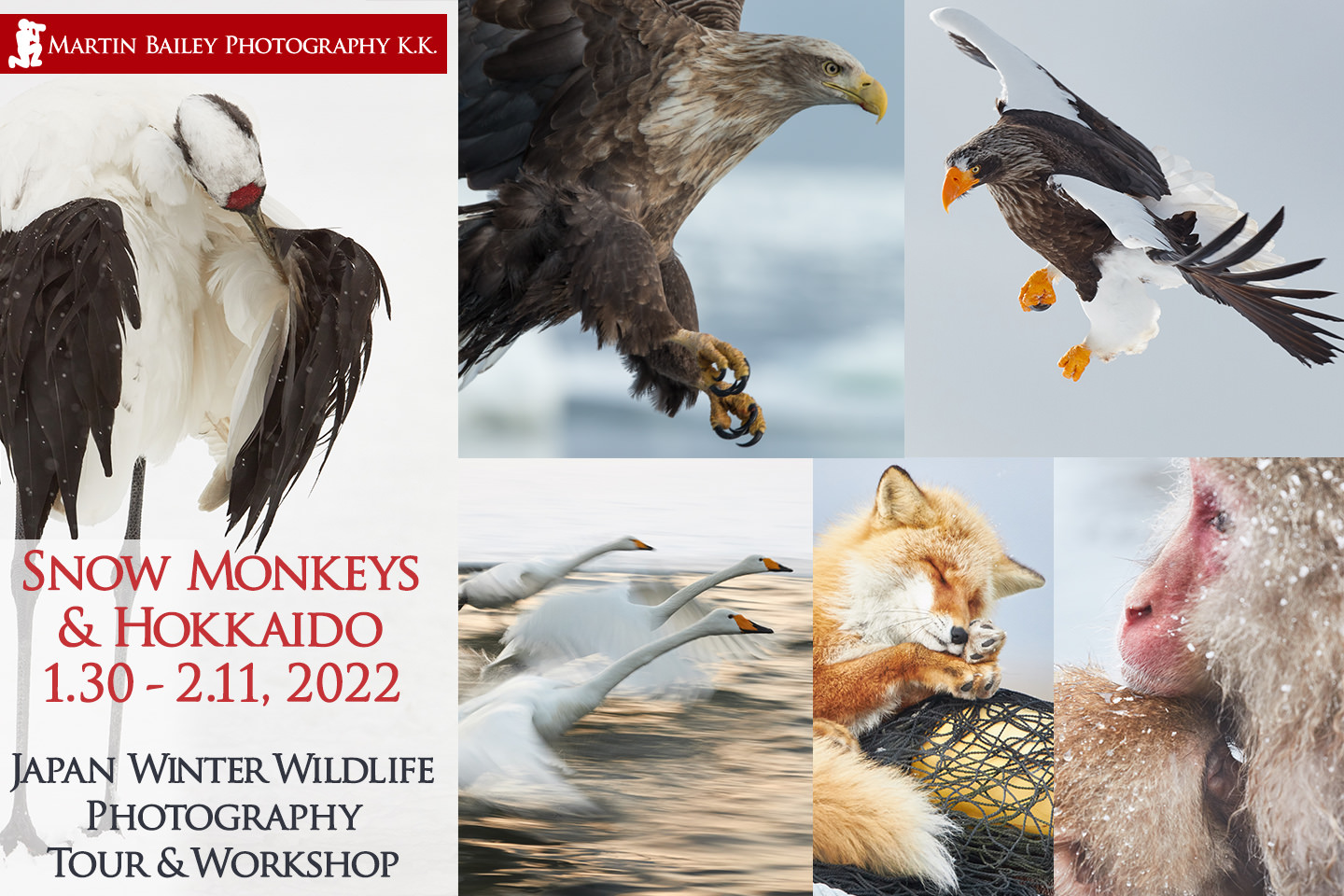
Show Notes
Check out my available tours here: https://mbp.ac/tours
Audio
Subscribe in iTunes to get Podcasts delivered automatically to your computer.
Download this Podcast as an MP3 with Chapters.
Visit this page for help on how to view the images in MP3 files.


0 Comments